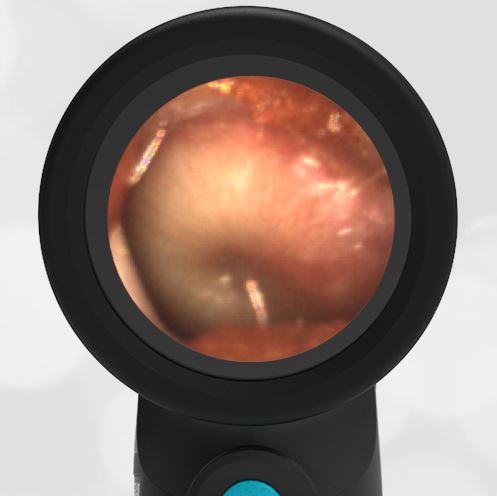
Acute Otitis Media (AOM)
A 19-month-old male is brought into the emergency department by his mother with concern for fever and fussiness. The child’s daycare was recently reopened after COVID protocols were deemed sufficient for the children’s safety. The mother reports that 3 days ago the child began to develop a cough and runny nose. For the past day, the child has had a temperature as high as 102.5 F. The mother has been using antipyretics for the fever and pushing fluids. On exam, the child appears sick without being toxic. He appropriately resists the exam and is easily comforted in his mother’s arms. His lungs are clear and he is mildly tachycardic. Capillary refill is less than 1 second. This image of his right ear is obtained.
The child has acute otitis media (AOM) of the right ear.
For much of 2020 and 2021, very few cases of viral syndromes in children were seen in primary care. This is presumed to be because of the effect of social distancing in reducing respiratory infections. Starting in the late summer of 2021, this situation has changed markedly as social distancing and home isolation have ended. Many ill children are presenting to primary care for evaluations such as this one. Although this child was not tested for a specific infectious agent, it’s a good bet that he has respiratory syncytial virus (RSV). RSV, although a virus, often leads to bacterial co-infection in the middle ear. Because of this, AOM is often treated with antibiotics. Often in the case of an infection, both ears will have evidence of AOM. In this case, the child’s left ear was normal. This provides a good opportunity to compare a normal ear to AOM in the same patient at the same time. 
 Here are the complete videos obtained from the child's left and right ear exams:
Here are the complete videos obtained from the child's left and right ear exams:


